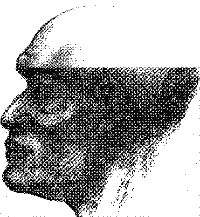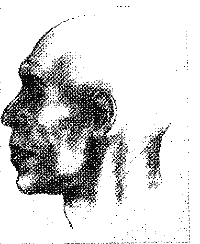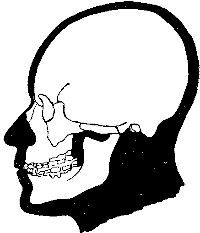| Kelteminar Culture in Neolithic steppe zone of Middle Asia | ||||
| L.T. Yablonsky USSR Academy of Sciences Kelteminar Craniology. Intra-group Analysis Author's copy, Moscow, Soviet Ethnography, 1985, No 2, pp. 127-140 |
||||
|
Links |
||||
|
Posting Foreword |
||||
|
Scientists hold that Kelteminar culture is related to Pit–Comb Ware culture and belongs to the Finno-Ugric peoples. The existence of Kelteminar culture is cited as an argument against existence of Aryan ancestral homeland in Central Asia. Based on archeological and anthropological typology, Kelteminars are classed as Finno-Ugrians, extending from Aral to Zeravshan and Northern Kazakhstan, and contiguous with Shigir Finno-Ugrians in the Urals. The Aral Kelteminar people melted away northward at about 2,000 BC as consequences of local environmental crisis caused by the behavior of the Amudarya. Per Juha Janhunnen, that happened after Mansic separated from the Nenets, and before Mansic branch split into consecutive Khantic, Permic, Mariic, Saamic, Mordvinic, Finnic & Para-Finnic. The Kelteminar people decisively were not horse husbandry people and not mounted riders. Archaeological and paleogeographic studies, main results of which were summarized by B.I.Weinberg in a special article (1997), showed that in the Neolithic period and before the end of the 3rd millennium BC, the Amudarya's Akchadarya and Sarykamysh deltas functioned simultaneously. Precisely to that time belong numerous monuments of the Kelteminar Neolithic culture, located both on the right and on the left bank in the lower course of the river (Vinogradov, 1981). Since the distribution of the Türkic people at about 2,000 BC is disputed, and the original linguistic affiliation of their components is as vague as at could be, short of direct DNA measurements there is no reason to deny a possibility that Kelteminars may have became a component of the Türkic people. The presence of the Madjar population in the Central Kazakhstan may be interpreted as the remnants of some stage of the Finno-Ugrian curriculum vitae. The Madjar memory of migration may indicate a short distance relocation from beyond the nearest river, mountain, or a lake. Extensive studies of archeological and anthropological remains, performed in the 1940's-1980's around Aral Sea area and along the Amudarya, demonstrated that the oases of the Middle Asia were populated by the Türkic pastoralists for nearly as far back as the pastoral economy existed. Moreover, in the Khîrezm area, the sedentary agricultural people were the same people that came to Khîrezm as nomadic pastoralists in search for good pastures and water. The archeological discoveries completely dispel the notion conjured up sometime in the 20th c. about the Middle Asia being a second home of the Indo-Iranians, in their trek from the N.Pontic to Persia and India. The faulty paradigm must be reconstituted to address a question of when and how the Indo-Iranians reached Middle Asia, and established their own agricultural colonies among the pastoral and settled people that had their origin in the eastern part of the steppe belt, and who carried from their previous homeland their mixed Caucasoid-Mongoloid morphology notable for its robust character, way different from their slim Indo-Iranian counterparts. Etymological studies of Sh.Kamoliddin in Ancient Türkic toponymy are very helpful in elucidating and visualizing the numerous different people that lived in the Chorasmia through the millennia. This posting left out tables with measurement and statistical data. They can be found
in the PDF file of the original article
|
||||
|
L.T. Yablonsky |
||||
Systematic excavations of the Tumek-Kichidjik burials in Sary Kamysh delta of the Amudarya (Tashauz district, Turkmen SSR) obtained craniological series that so far is the only one representing the broad Neolithic steppe zone of Middle Asia. The burials date from 4th-3rd millennia BC, they belong to the Kelteminar Neolithic culture. The head of the excavations, A.V. Vinogradov, emphasized the southern origin of this culture, lin king it to the Asia Minor. Seven skulls of this series were published by T. Trofimova. Later, I have uncovered two male skulls from excavations in the same cemetery. Thus, the total number of the series is nine skulls. They were measured again under full craniometrical program. Due to poor preservation of bones, a painstaking work of restoration and preservation of the skulls was done using a technique developed by M.M. Gerasimov. The practice of paleoanthropological research shows that only thorough and detailed intra-group craniological analysis can become a base for race-genetical constructions. The number of series ascending to the Stone Age as a rule is small. Thus, great importance for theoretical understanding and reconstruction of ethnic processes in the ancient groups has accumulation and systematization of the primary cranial measurements. This is often given a secondary role, while the prime research is on the inter-group analysis and related attempts to create ethno-historical patterns, sometimes quite hypothetical because of small size and fragmentation of available objective materials. Individual measurements of Kelteminar skulls (three male and five female) demonstrate certain morphological heterogeneity of the series (Table 1). This general picture is complemented with information on the descriptive features of skulls (Table 2). The series is dominated by ovoid skull with straight forehead (with two skulls with pronounced sloped forehead), round or slightly flattened arch, rounded occipital profile, near-rectangular orbits, anthropic (more primitive) form of the lower edge of the piriform aperture, and a high cross-section of the nasal bones. On the male skulls noted spatulate of the incisors (two cases), crowding (also two), and inter-root pocket of enamel of the first upper molars (one case). Macrorelief on the female skulls is weak, but men strongly differ by developed glabella and brow with a moderate development of the mastoids and occipital tubers. Table. 3 shows average dimensions of craniometric traits. The male series (n = 3) is characterized by large size of the cranium. The skulls are maturized, with large longitudinal and transverse mean diameter, mezocranic, with a low vault. The values of the height diameter from bazion and porion fall into category of small. The forehead, wide in front, is tapering posteriorly. Faces of average width and height (one skull with zygomatic diameter of 151 mm!), The general facial angle is prognathhic. In horizontal plane, face is flattened at the top level and well-profiled at zigo-maxillary points. Piriform aperture small in height and width. The nose bridge is sharply profiled with moderate protrusion of the nasal bones. Orbits are small, of small height and width. Fang sockets are very deep.
[Missing part of paragraph] levels, mezognathic, with tendency to alveolar prognathhism. The nose is medium height, broad, sharply protruding, with well-profiled nose bridge. Orbits are wide and high. Fang sockets are very deep. The lower jaw is gracile, with weak relief. Some idea of the physical appearance Kelteminarians give graphic reconstruction of the skull (see Fig. 1 - 4). Even at external examination of the male and female skulls are noticeable certain differences that appear to be very important. The numerical measurements do not contradict these observations, which gave impetus to carefully examination of the nature of the sexual dimorphism in the series. Sexual dimorphism coefficients were calculated for 21 craniometric traits (Table 4). 19 of them turned out to be outside of standard values, with the most coefficients being too low (15 out of 19). In our series, the average factor of sexual dimorphism for these traits is 0.968, while the standard average factor for the same feature is 1.055. The difference is sufficiently large, and calling for attention. In particular, the male skulls is greater nasomalar angle (nasomalar angle is a measure of upper facial flatness) with smaller protrusion of the nasal bones, whereas in homogeneous populations women tend to be more flat-faced, their protrusion of the nasal bones is generally smaller. Literature noted that appearance in a series of sexual dimorphism factors deviating from the standard norms, including their reduction, may be due to unavoidable errors in determination of sex without post-cranial skeleton bones. A probability of such error is increased with smaller samples in a series: the apparent sexual dimorphism may not coincide with the actual dimorphism.  Thus, the morphological differences between male and female skulls may in part have racial significance, although unambiguously, the reality of existence of differences in the population can not yet be resolved. The anthropological heterogeneity of the series as a whole is ascertained with greater confidence. To enhance the sample representativeness, was applied technique proposed by G.F.Debets for conversion of female parameters to male, followed by combining the series. Parameters of sexual dimorphism calculated by Debets were taken as the reference ratios. Conversion was performed individually for each skull. The result is a joined group of eight skulls. Its numerical description is in Table. 5. As is known, an obviously mixed group the average values can mask intra-group differences, but it is still useful to explore them, because they allow to trace variability direction in a series, and establish its distinct traits. The averaged values in the generalized group characterize the skulls as mezocranial, with large longitudinal, medium cross-sectional, and large height diameter, with average ear elevation. Face is broad, medium-high, mezognathic, well profiled in the horizontal plane at the nazion and zigomaxilar points level. Orbits are broad, with small or medium height. Fang sockets are deep. The piriform aperture is small in height and width. The nose with well profiled nose bridge strongly protrudes. In the structure of the under-nasal region predominate anthropic (more primitive, ape-like) forms. The wide dispersion in values of square deviations for the majority of parameters and significant increase in values, compared with standard values, draw attention. The dispersion of the Kelteminarian skulls were compared with the standard values using P-criteria (Fisher criteria), to statistically analyze homogeneity of the series, with an infinite number of degrees of freedom for standard variances, and obtained coefficients of variation in comparison with the standard variations (Table 6). Of the calculated from the 26 dispersions 16 showed significant deviations from the standard. Of the 16 variation coefficients, only two fall within the boundaries of the global norms. The indicators suggest that the series variability is definitely higher than it should have been within anthropologically homogeneous group. The results of statistical analysis unequivocally confirm visual impression from examination of the skulls. Because of the small quantity in series, it is impossible to conduct the intra-group correlation analysis on a statistical level. Nevertheless, visually in the series stand out two main components. The first component are mezocranial skulls with tendency to brachicrania, with large across diameter and low vault; they are broad-faced, distinguished by the weakened profile of the facial skeleton in horizontal plane with moderate protrusion of the nasal bones (e.g., male skull from burial 28 and female skull from burial 5). The second component also has mezocranial skulls, but with larger height diameter and a tendency to dolichocrania. From the first group they also differ by less pronounced width of the face, and acute horizontal and vertical profiling of the facial skeleton (for example, the male skull from burial 25 and female skull from burial 19). We can't define the origin of these components and link them with real existing anthropological types. This is a matter of future research. However, presented here results of intra-group analysis of Kelteminarians' cranial series can contribute to define a wide range of issues related to the ethnic history of the ancient populations in the Neolithic territory of Central Asia. The intra-group analysis suggests that the key to solving those issues will perhaps be found outside the Central Asian region. |
||||

